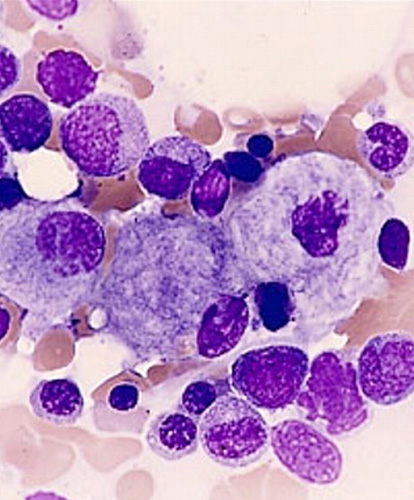- Science
- Clinical Trials
- Guide to Clinical Trials Your participation makes a difference
- Clinical Trials in Children Designed to improve kids' health
- Data and Results Sharing our Results
- Integrity and Transparency Building Trust
- Diversity Equity and Representation
- Plain Language Study Results Trial Result Summaries
- Expanded Access & Compassionate Use Possible Treatment Options
- Find a Trial
- Areas of Focus
- Rare Disease Smaller populations but big impact
- Internal Medicine Extending lifespans worldwide
- Inflammation & Immunology Treatment at the molecular level
- Vaccines Preventing the spread of infections
- Oncology The science of optimism
- Anti Infectives Combatting an evolving risk
- Areas of Innovation
- Gene Therapy Breakthroughs become treatments
- Medicinal Sciences The next generation of science
- Precision Medicine Developing tailored medicines
- Maternal Immunization Protecting newborns at the start
- mRNA Technology Unleashing the next wave of scientific innovations
- Diseases & Conditions
- Coronavirus Resources
- Product Pipeline
- Research Sites
- Clinical Trials
- Products
- How Drugs are Made
- Branded vs. Generic Learn the difference
- Biologics & Biosimilars Cures found in nature
- Commitment to Quality Maintaining the highest standards
- Global Supply Strategic manufacturing locations
- Manufacturing Sites Where medicine is made in the U.S.
- Medicine Safety
- Health Literacy Learning to be well
- Treatment Choices Learning about treatment decisions
- Partnering With Patients Helping others by reporting side effects
- Tips for Patients Preventing medication errors
- Reporting Adverse Events
- Counterfeiting Preventing medication errors
- Product Safety
- Product List
- Product Contacts
- PfizerPro for Professionals
- Patient Assistance Programs
- Distributors
- How Drugs are Made
- Stories
- Newsroom
- About
- People
- Executives Our senior-most leadership
- Board Members The people steering our company
- Scientists Our experts making discoveries
- Patient Stories Our patients
- Colleague Stories Our colleagues
- Responsibility
- Ethics & Compliance Each of us is responsible
- Responsible Business Breakthroughs that change patients’ lives
- Patient Advocacy & Engagement Putting Patients First
- Global Impact Meeting urgent needs worldwide
- Diversity, Equity, and Inclusion Everyone has something to offer
- Environmental Sustainability Our responsiblity to the environment
- Human Rights Furthering dignity and worth
- Health & Safety
- Intellectual Property The benefits of fair competition
- EHS Governance
- Misinformation
- Programs & Policies
- Grants Support for independent research
- Political Partnership Supporting like-minded organizations
- Working with Healthcare Professionals Collaboration to improve lives
- Prescription Value & Pricing How to lower patient costs
- Privacy Principles Commitment to personal data privacy
- Ready for Cures Improving Access to Medicines
- Transparency in Grants Committed to Disclosure
- Policy Positions
- Investors
- Investors Overview Information for stockholders
- Why Invest Why to join us in our mission
- Events & Presentations Calendar of upcoming events
- Financial Reports Quarterly reports and more
- Investor News Announcements about our performance
- Stock Information Charts and data
- Shareholder Services Information on stock transactions
- Corporate Governance
- Corporate Governance Overview Gaining insight into our performance
- Board Committees & Charters Defining the corporate structure
- The Pfizer Board Policies Ensuring ethical leadership
- Corporate Governance FAQs Learn more about our approach
- Contact Our Directors Email any of our Directors
- Purpose
- History
- Careers
- Partners
- People
Disease Education Information
Early and Proactive Treatment Makes a Difference
Acromegaly is a chronic rare disease associated with excess growth hormone secretion.1 It causes overgrowth of body tissues and, if untreated, can lead to secondary problems such as hypertension and heart failure.1 Failure to receive adequate medical treatment for this condition can reduce life expectancy by 10 years.2
- What is Acromegaly?
Acromegaly is caused by chronic, excess growth hormone secretion, generally caused by a noncancerous tumor in the pituitary gland (a ‘pituitary adenoma’).1 The pituitary is the “master gland” of the body, which controls growth, metabolism, and reproductive activity and sits in the sella turcica at the base of the brain.3
Patients with this condition experience an increase in the size of their hands and feet, broadening of their fingers, and coarsening and broadening of their facial features.1 They may also experience headaches and can often suffer from diabetes, hypertension, arthritis and heart failure.1
- Who Gets Acromegaly and How?
Acromegaly is rare, with only three or four patients per million individuals diagnosed with the condition each year.4 Acromegaly develops gradually and typically is not diagnosed until several years—often, as many as seven—after excess growth hormone secretion has begun.4
This condition usually occurs in patients without a family history of acromegaly.5 One should suspect the condition if the size of the patient’s shoes, rings, and gloves increase or if facial features start to coarsen and spaces between the upper front teeth widen.6
- What are the Symptoms of Acromegaly?
The main symptoms are caused by abnormally high growth hormone and insulin-like growth factor-I (IGF-I) levels, and some are caused by the tumor itself. They include the following:1
- Broadening of the nose, lips, ears, and forehead; enlarged tongue and increased spacing between front teeth
- Headaches
- Hoarse voice; sleep apnea and loud snoring
- Growth in hands and feet that requires larger shoes, rings, and gloves
- Appearance of skin tags and excessive sweating
- Arthritis of large joints and joint pain Polyps in the colon, thyroid, and uterus
- Hypertension and heart failure
- Diabetes mellitus. Diabetes may be caused by or worsened by acromegaly, and diabetic patients with the condition may require higher doses of anti-diabetes medicines
When growth hormone levels are not controlled, and diabetes and heart disease are present, the patient’s life expectancy may be reduced by as much as 10 years.2
- How is Acromegaly Diagnosed?
Because excess growth hormone levels stimulate increased production of IGF-I, acromegaly may be diagnosed either by measuring levels of IGF-I or by measuring growth hormone levels directly. IGF-I measurement is the easier to detect because it only requires a simple blood test and samples may be taken at any time of the day. Direct growth hormone measurement is more involved since it requires several measurements, both before and after the patient has ingested a glucose solution.1
Once excessive growth hormone and IGF-I levels have been confirmed, magnetic resonance imaging (MRI) is used to examine the brain and determine whether a pituitary adenoma is present.1
- Can Acromegaly be Treated?
In treating acromegaly, the goal is to restore growth hormone and IGF-I in the blood to normal levels. If treatment succeeds, the soft tissue overgrowth will improve over several months and the risk of decreased life expectancy will return to where it was before the condition was diagnosed.1
Surgical removal of the tumor is usually the first choice, but medications will be needed if surgery does not cure the condition, which is common. Potential treatments include synthetic analogues of the hormone somatostatin, dopamine agonists, and growth hormone antagonists. In some cases, radiation therapy may be required.1
Acromegaly Resources

Area of Focus: Rare Disease
Acromegaly is a focus of our Rare Disease Therapeutic Area.
Visit Our Rare Disease Site DetailsClinical Trials
We proudly partner with thousands of study sites and tens of thousands of trial participants around the world. It's these clinical trials that lead to life-changing medicines.
Go to Pfizer Clinical Trials Site DetailsReferences
1. National Organization for Rare Disorders. Acromegaly. https://rarediseases.org/rare-diseases/acromegaly/. Accessed February 10, 2020.
2. Găloiu S, Poiană C. Current Therapies and Mortality in Acromegaly. J Med Life. 2015;8(4):411-415.
3. American Association of Neurological Surgeons. Pituitary Gland and Pituitary Tumors. https://www.aans.org/en/Patients/Neurosurgical-Conditions-and-Treatments/Pituitary-Gland-and-Pituitary-Tumors. Accessed February 10, 2020.
4. NIH National Institute of Diabetes and Digestive and Kidney Diseases. Acromegaly. https://www.niddk.nih.gov/health-information/endocrine-diseases/acromegaly. Accessed February 10, 2020.
5. Gadelha M, Kasuki L, et al. The Genetic Background of Acromegaly. Pituitary. 2017;20(1):10-21.
6. Acromunity. Acromegaly Symptoms and Signs. https://www.acromunity.com/about-acromegaly/learn-about-acromegaly/acromegaly-symptoms-and-signs/. Accessed February 10, 2020.
